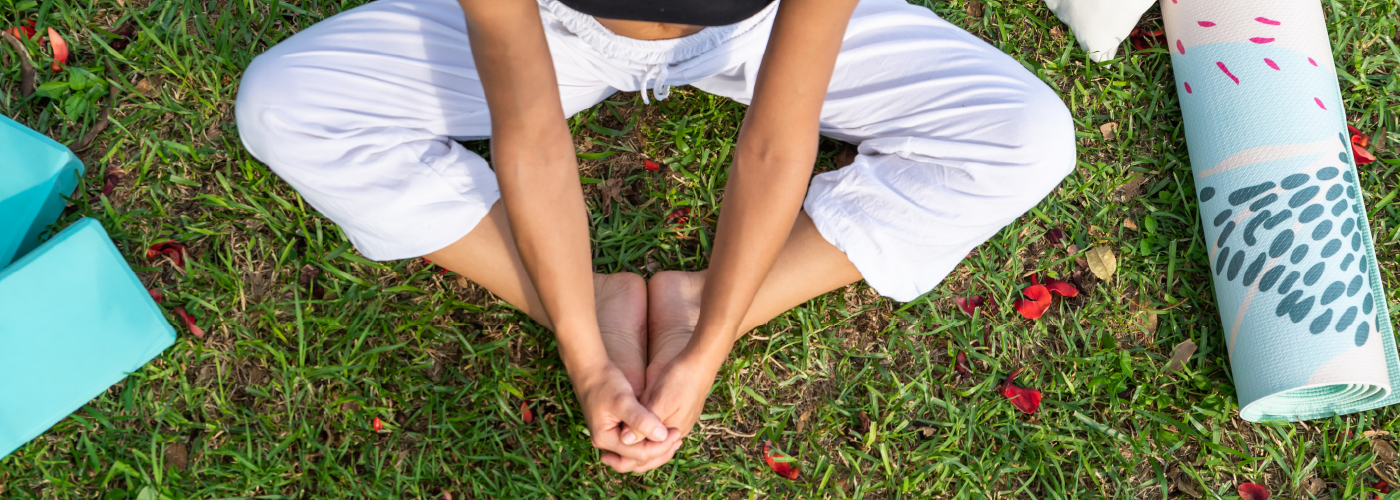Grounding Practices: Reconnecting with the Earth in Stressful Times
In today’s fast-moving world, stress has become a constant companion. Between endless notifications, responsibilities, and the pressure to keep up, it’s easy to feel overwhelmed, unsteady, and emotionally drained. In such moments, grounding practices offer a powerful way to pause, reconnect, and return to balance.
Grounding—also known as earthing—is the practice of intentionally connecting your body and mind with the Earth’s stabilizing energy. It’s about slowing down, being present, and finding peace amid chaos. These simple practices can transform stressful times into opportunities for healing and self-discovery.
At J.O.Y. Journey of You, we believe that reconnecting with the Earth is not just a wellness practice but a spiritual one. Grounding allows you to realign with your soul, release stress, and experience the joy of living fully in the present moment.
What Are Grounding Practices?
Grounding practices are techniques that help you reconnect with your body, the Earth, and the present moment. They calm the nervous system, reduce stress, and provide a sense of safety and stability.
When life feels uncertain, grounding anchors you back into yourself. Instead of being pulled in a thousand directions by anxious thoughts, you return to your center—rooted, supported, and at peace.
Grounding can be physical, such as walking barefoot on the ground, or mental, such as practicing mindful breathing. Whether through movement, visualization, or connecting with nature, grounding reminds us that we are part of something greater and that we are supported by the Earth itself.
Why Grounding Matters in Stressful Times
Stress triggers the body’s fight-or-flight response, flooding us with adrenaline and leaving us feeling tense, restless, and disconnected. While this response is natural, remaining in this heightened state for too long can impact mental, emotional, and even physical health.
Grounding practices help regulate this stress response by:
Calming the mind and reducing racing thoughts.
Bringing attention back to the present moment.
Releasing negative or stagnant energy.
Strengthening the body–mind connection.
Creating a sense of safety and stability.
In stressful times, grounding practices act like a reset button. They help you shift from chaos to calm, from fear to peace.
Simple Grounding Practices to Try
Here are some powerful grounding practices you can integrate into your daily routine, especially during stressful times:
1. Walk Barefoot on the Earth
One of the simplest and most effective grounding practices is walking barefoot on grass, sand, or soil. This direct skin-to-Earth contact helps your body absorb the Earth’s natural energy, restoring balance and calm.
2. Practice Conscious Breathing
When stress rises, our breath often becomes shallow. Grounding through mindful breathing brings immediate calm. Try inhaling deeply through your nose, holding for a few seconds, and exhaling slowly through your mouth. Focus only on the rhythm of your breath to center yourself.
3. Visualize Roots Connecting You to the Earth
Close your eyes, place your feet firmly on the ground, and imagine roots extending from your body deep into the Earth. Visualize stability, strength, and support flowing back into you. This visualization is a powerful grounding tool, especially in stressful times.
4. Use Crystals for Grounding
Certain crystals—such as black tourmaline, smoky quartz, and hematite—are known for their grounding energy. Hold one in your hand, place it near your root chakra, or keep it in your pocket to help you stay centered.
5. Engage in Mindful Movement
Yoga, tai chi, or simply stretching with awareness can be grounding practices. By focusing on your body’s movements and sensations, you quiet the mind and reconnect with the present moment.
6. Connect with Nature
Spend time in nature to reset your energy. Sit under a tree, listen to flowing water, or simply observe the beauty around you. Nature reminds us of life’s cycles and helps us feel held and supported.
7. Journaling as Grounding
Writing down your thoughts and emotions is another form of grounding. By putting words on paper, you release mental clutter and gain clarity, creating space for peace.
The Spiritual Dimension of Grounding
Grounding is more than a stress-management tool—it’s a spiritual practice. It reminds us that we are connected to something larger: the Earth, the universe, and divine consciousness.
In stressful times, grounding reconnects us with this deeper truth: that we are supported, safe, and guided. By aligning with the Earth’s energy, we allow ourselves to heal, release what no longer serves us, and move forward with greater clarity.
At J.O.Y. Journey of You, we encourage grounding not just for stress relief but as a path to spiritual awakening. It is through these practices that you begin to hear your soul’s wisdom and rediscover the joy within.
Benefits of Grounding Practices in Stressful Times
Incorporating grounding practices into daily life can create profound shifts in mental, emotional, and physical well-being:
Reduces Anxiety: Calms nervous system and lowers tension.
Improves Focus: Brings clarity to the mind, making it easier to make decisions.
Encourages Emotional Healing: Helps release heavy emotions and old patterns.
Strengthens Intuition: Being grounded enhances your ability to listen to your inner guidance.
Boosts Energy: By balancing your system, grounding restores vitality.
Supports Sleep: A calm, grounded body and mind promote restful sleep.
FAQs About Grounding Practices in Stressful Times
Q1. What are grounding practices in simple terms?
Grounding practices are techniques—like walking barefoot, breathing deeply, or meditating—that help you feel calm, balanced, and connected to the present moment.
Q2. Can grounding really help during stressful times?
Yes. Grounding calms your nervous system, reduces anxiety, and creates a sense of stability when life feels overwhelming.
Q3. Do I need to spend hours grounding?
Not at all. Even a few minutes of walking barefoot, deep breathing, or visualizing roots can make a noticeable difference.
Q4. Can crystals enhance grounding practices?
Absolutely. Crystals like black tourmaline or hematite amplify grounding energy and provide extra support in stressful times.
Q5. How often should I practice grounding?
Daily practice is best, but even grounding a few times a week can help restore balance and reduce stress.
Conclusion: Reconnect, Release, and Realign
Stressful times can make us feel unsteady, anxious, and disconnected. But through grounding practices, we are reminded that we are never truly lost—we are always supported by the Earth beneath us.
By walking barefoot, breathing deeply, visualizing roots, or meditating with crystals, you can bring yourself back into balance. Grounding helps you release tension, heal emotionally, and reconnect with your inner wisdom.
At J.O.Y. Journey of You, we believe grounding is more than a practice—it is a return to your essence, your spirit, and your joy. By grounding regularly, you realign with the Earth, reconnect with your soul, and rediscover the peace that is always within you.



